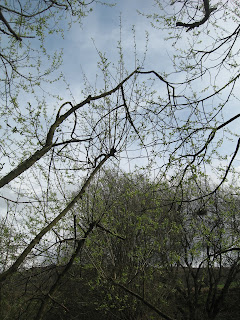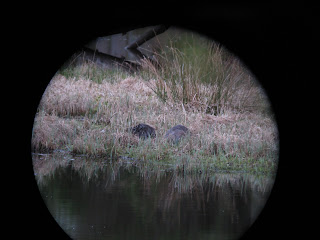 Getting on for three years ago there were reports of activity by a beaver on the Tay near Logierait. It was said that the Royal Zoological Society of Scotland had sent their trapper to try and catch the animal. Another rumour claimed that the farmer had sent the RZSS and SNH packing. He had not wanted the animal to be trapped and was happy to play host to it.
Getting on for three years ago there were reports of activity by a beaver on the Tay near Logierait. It was said that the Royal Zoological Society of Scotland had sent their trapper to try and catch the animal. Another rumour claimed that the farmer had sent the RZSS and SNH packing. He had not wanted the animal to be trapped and was happy to play host to it.Somebody reminded me of this recently and knew how to get in touch with the farmer in question, so I telephoned and arranged a visit.

We walked down to the bank of the river and soon found plenty of signs of activity from the winter. We didn't see any really recent gnawing (such as from the previous night), but there was some that could have happened in the last week or so.

What is clear in this photograph is that we are looking at coppicing activity that comes from at least Spring 2009.

A really interesting sight was the coppicing of willow, carried out during times of flood high up the trees. You can see, at between roughly half past one and two-o'clock from Louise's head, branches that have been gnawed and then put out new shoots.

This picture shows the same two nodes of shoots from closer.

















